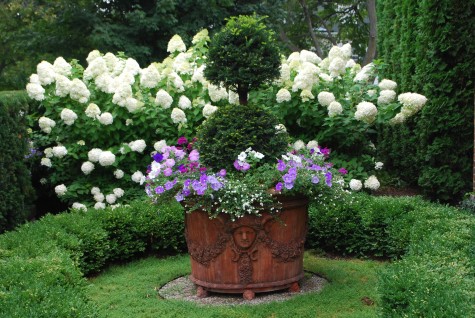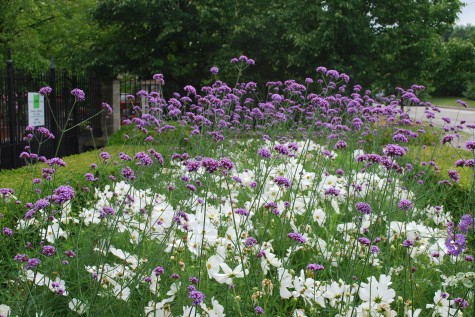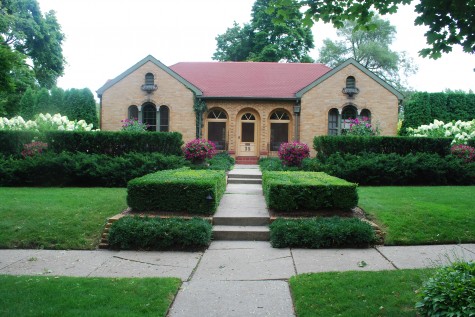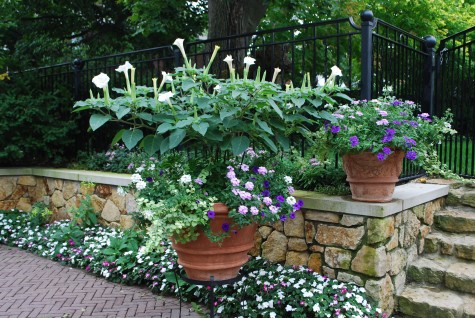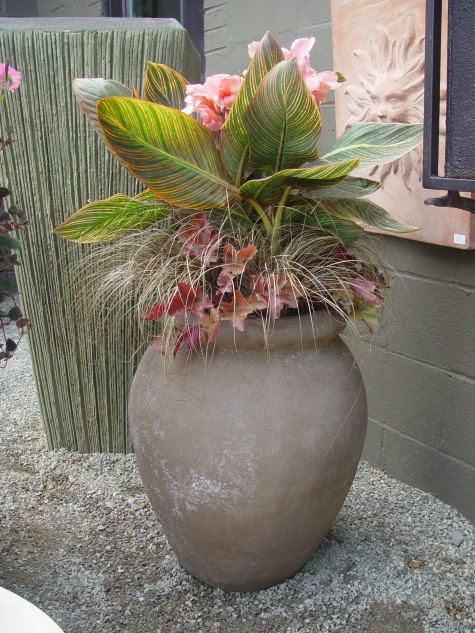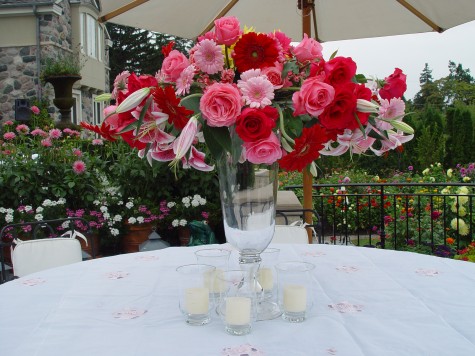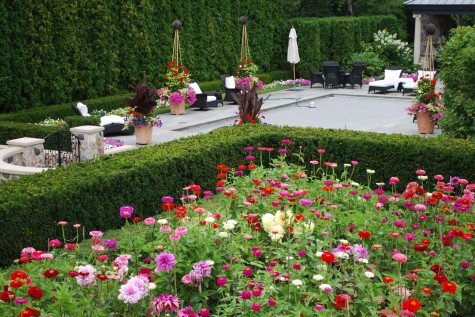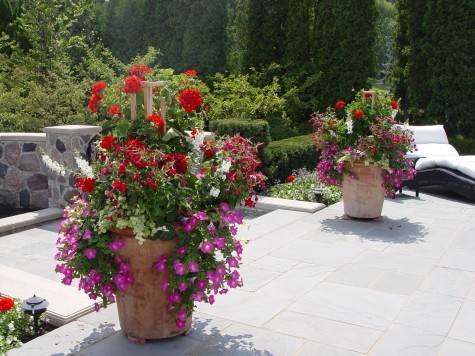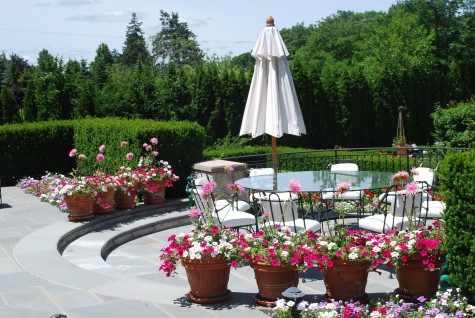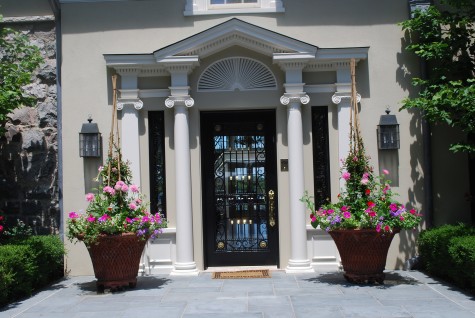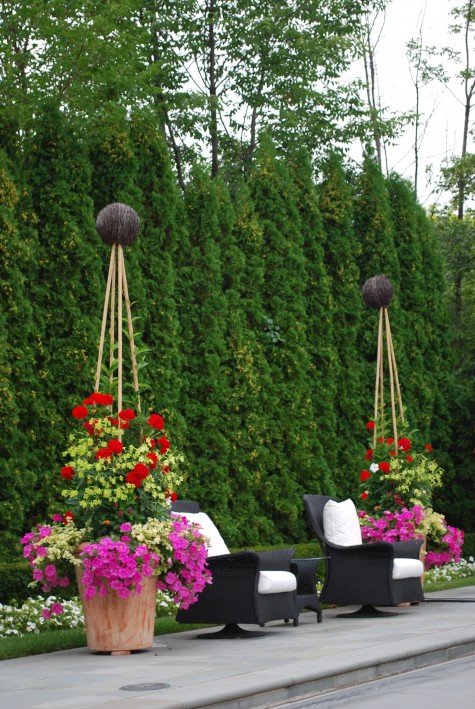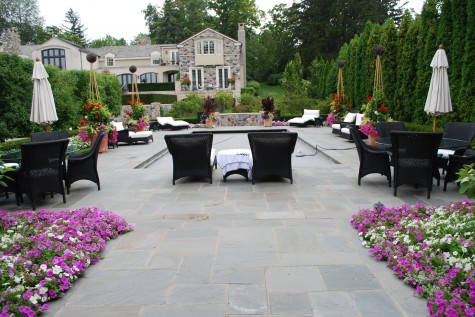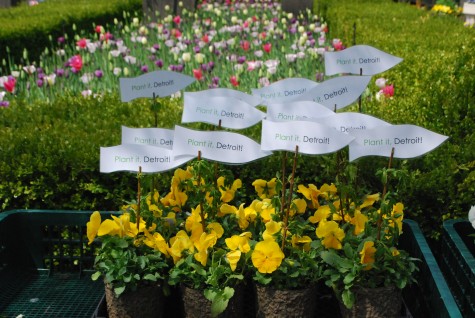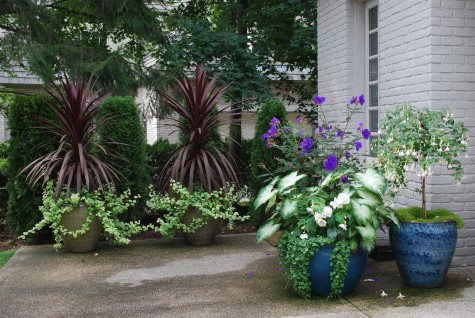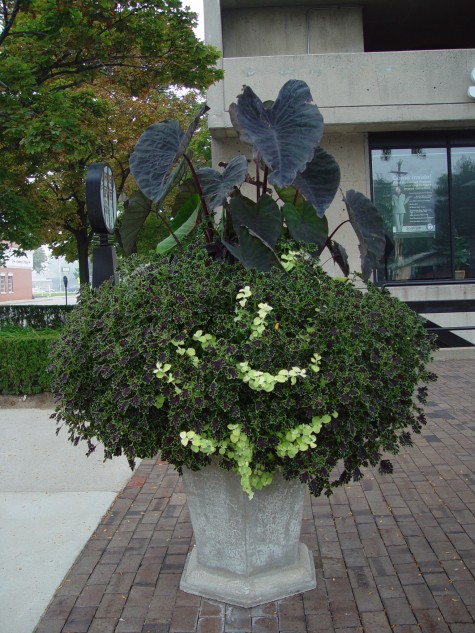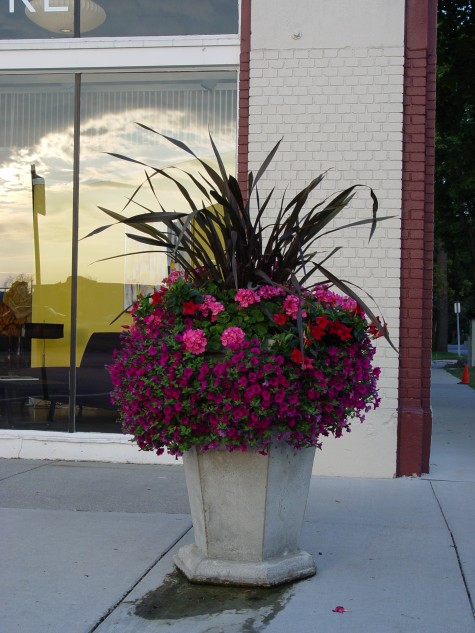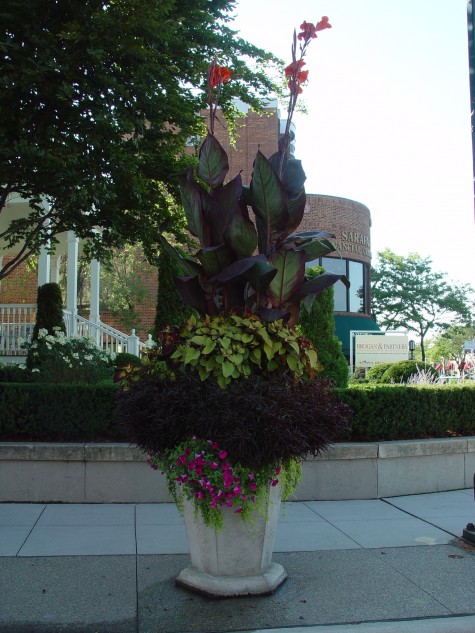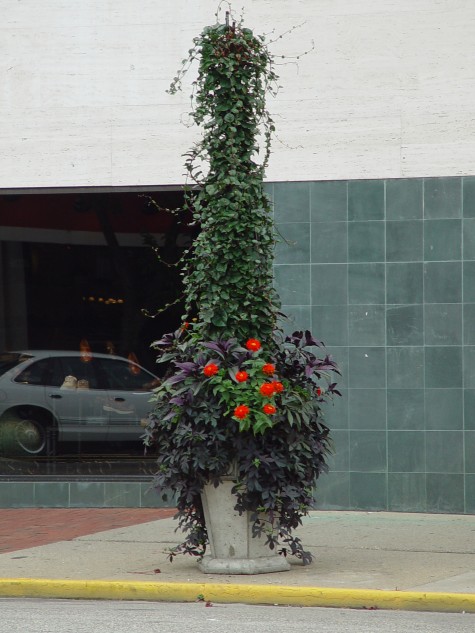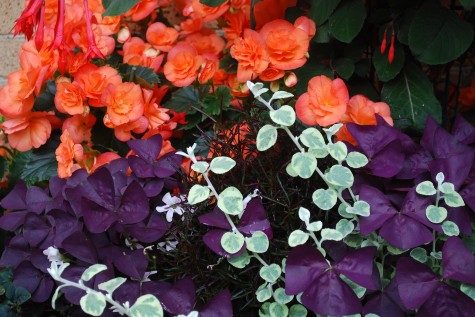What do I mean by this-styling a container? I could take 5 plants, and plant them in 5 identical containers in such a way that the end results would feature 5 different looks. The style of planting you like informs how you arrange and choose numbers of plants in a container.
Let’s pick 5 plants. Verbena bonariensis-a very tall verbena with small knobby flowers that are emphatically lavender. Nicotiana alata lime-a rangy and tall flowering tobacco whose flowers are the most divine shade of green. A Gallery – meaning fairly short- dahlia in a peachy orange. Heliotrope “Marine”-a short growing, dark purple flowered and very fragrant heliotrope. Plant number 5-lime licorice. This felted leaf foliage plant known as Helicrysum has a horizontal and spiky habit of growth . You’ll have to bear with the pictures that do not match the text-I have never planted a container with these five plants. My main idea is to speak to the idea of style.
Suppose you have a very formal and symmetrical, very classically inspired home. Given that you like that formal house, you might style you containers in a very formal manner.Verbena bonariensis is formal in the sense that it grows straight up in a V shape, and never goes over in a bad wind. Want to contain it, and feature it as a centerpiece in a formally styled pots?
Gather up all of the arms once they grow tall, and tie them with a raffia bow. That bow should be symmetrical, mind you. The above picture features datura-and not verbena, but the idea is the same. This datura has had all of the lower leaves removed-it has a more topiary, rather than shrubby look. Each arm is staked, to further give it an upright appearance. For our imaginary container, plant the lime nicotiana all around this centerpiece of verbena. As nicotiana tends to grown grow wild, scoop up those branchas at a lower level than the verbena, and discreetly stake and tie them just below the flower stalks. Keep the lower leaves removed. Alternate the peach dahlias and heliotrope. You may need two heliotrope for every dahlia-so the volumes are equal. Lime licorice all around the edge of the pot will provide a uniform petticoat upon which the rest of the composition will rest. Trim off any branch which dips below the horizon.
Regularly pinch any wild branches to produce a uniform thicket of licorice-trim to an end that resembles a tutu. Every plant has a habit of growth. If you want your containers to have a little attitude, you must supply that yourself. This is to say that you are somewhat in charge of how things grow. Even this container of zinnias and petunias can be trimmed into a more formal shape without any loss of bloom. If this is your style of planting, a little maintenance will go a long way.
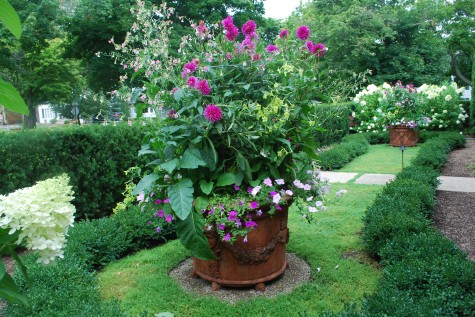 If lush and profuse in the English style is your idea of a great look, I would pack your container with the verbena, nicotiana, and dahlias mixed-but I would switch to a tall lax growing dahlia that you discreetly support with a tuteur. The rod steel plant climber is this pot has competely disappeared from view. Stake as little as possible. Keep every asymetrically growing unexpected leaf that you can. The lime licorice, if it is happy, will weave itself in and out of every other plant you have in a natural way. The heliotrope will have to get leggy and rangy to keep up, and it may finally disappear in the jungle of other plants. How an English-style cottage garden planting changes over the course of the season is part of its charm. The big idea here-plant big plants, and enjoy how they relate to one another with a minimum of interference. Bug-chewed leaves are welcome here.
If lush and profuse in the English style is your idea of a great look, I would pack your container with the verbena, nicotiana, and dahlias mixed-but I would switch to a tall lax growing dahlia that you discreetly support with a tuteur. The rod steel plant climber is this pot has competely disappeared from view. Stake as little as possible. Keep every asymetrically growing unexpected leaf that you can. The lime licorice, if it is happy, will weave itself in and out of every other plant you have in a natural way. The heliotrope will have to get leggy and rangy to keep up, and it may finally disappear in the jungle of other plants. How an English-style cottage garden planting changes over the course of the season is part of its charm. The big idea here-plant big plants, and enjoy how they relate to one another with a minimum of interference. Bug-chewed leaves are welcome here.
If a container planting which is more architectural is your style, you need to ditch both the verbena and the nicotiana. Neither one of them are particularly architectural plants-they are wispy, and move in the breeze. Opt instead for a centerpiece plant with bold leaves and habit of growth, and key everything else to enhance that idea. The peach dahlias would color compliment this dward striped-leaf canna pictured above in much the same way that the heuchera does. The toffee colored grass is an unusual color, and sets off the canna leaves in a dramatic way. There are only 3 plants here, instead of five-modern and contemporary style plantings ask for a restricted palette.
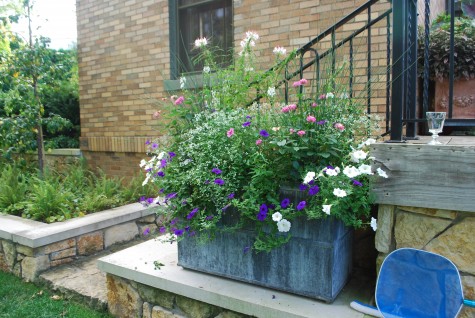 If very loose and meadow like is a style you appreciate, take all five plants, and plant them randomly, but in very different numbers. 10 verbena, three lime nicotiana, one dahlia, and equal numbers of heliotrope and lime licorice mixed will result in a random and casual, road-side weed like planting. This planting with dwarf cleome, juncus white angelonia, euphorbia and petunias features a little bit of everything in a wispy way. All of the leaves are small; all of the flowers are small and subtle. Euphorbia diamond frost does a great job of obscuring foliage, and imparting an airy and natural look to any container. Were I to plant in this style, I would choose the euphorbia over the heliotrope.
If very loose and meadow like is a style you appreciate, take all five plants, and plant them randomly, but in very different numbers. 10 verbena, three lime nicotiana, one dahlia, and equal numbers of heliotrope and lime licorice mixed will result in a random and casual, road-side weed like planting. This planting with dwarf cleome, juncus white angelonia, euphorbia and petunias features a little bit of everything in a wispy way. All of the leaves are small; all of the flowers are small and subtle. Euphorbia diamond frost does a great job of obscuring foliage, and imparting an airy and natural look to any container. Were I to plant in this style, I would choose the euphorbia over the heliotrope.
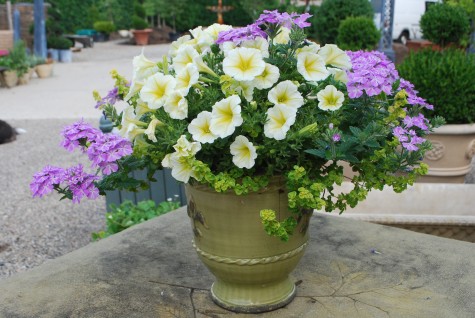 Small containers can have just as much style as big ones. I particularly like this table top pot-yellow potunias, lavender star verbena, and gold marjoram. It has a great natural shape, interesting color, and relaxed styling, does it not?
Small containers can have just as much style as big ones. I particularly like this table top pot-yellow potunias, lavender star verbena, and gold marjoram. It has a great natural shape, interesting color, and relaxed styling, does it not?
